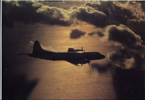el cid again
Posts: 16922
Joined: 10/10/2005
Status: offline

|
quote:
ORIGINAL: Nemo121
Well it is germane since in discussing how to model something most authorities would agree that one must first decide on an ideal high-fidelity representation and then, unfortunately, pare back from there as computing power, research resources and source material availability dictate.
REPLY: OK - in principle I agree. However, in practice I want to use some part of the EXISTING data set to generate the maneuverability value. Anything - absolutely anything else - requires a massive amount of manpower in research. It is I admit worse for RHS - since we have more plane types - and so daunting. Worse, since I do plane research, and have a background in doing this professionally, I realize that to do this with respect to a sort of data NOT included in standard materials, is wholly impractical: we will be able to get this data for a number of more famous planes, but certainly not for rare ones and those that never became operational - and likely in between lots of cases where a plane simply does not have that information anywhere we can find it. I MIGHT be able to derive it - but in that case we are likely to end up right where we started: we are letting ROC and speed be the sources we derive from - and the equation 20% ROC and 80% speed seems to match remarkably well my models (where 42 data types are used). IF the data were both easy to get and apply - and is certainly better - I would love to have it. I am skeptical we can get all of it. I am skeptical we can calculate it in the other cases in a way everyone agrees is fair. And it looks a lot like the work involved would be massive (measured in man-months) for a marginal return (less than 5% improvement at a seat of the pants guess). This latter because checking a few cases of the crude model we use against sophisticated models shows amazing similarities in the ratio of values for a composite maneuverability rating. We have something that is a lot better than you think. Check it out.
So, is roll rate important? Absolutely, it was a key component in why the DR I and Sopwith Camel were such effective dogfighters and why the FW-190, when flown by an expert pilot, could out-perform many Allied types. The reason being that roll rate did play one of the main parts in determining how quickly the plane could TRANSITION between specific tactics ( left turn, 180 degree barrel roll, split S etc) and, as such, allowed expert pilots to transition through OODA loops more quickly than their opponents thus gaining a decisive temporal advantage in the OODA loop.
REPLY: I do not disagree in principle. I am not sure it matters. We do not have roll rate data for a single type in the present data set. I know of no single source to get roll rate data to a uniform standard. In fact I know of no combination of sources that is likely to produce this data for even a majority of planes in the set. I suspect there is no way to get it for every last type: I will give you 100:1 odds we must estimate it for at least some planes and 10:1 odds we have to estimate it for a major fraction (quite likely a majority) of planes of interest. Please address this in a way that says: I have scholarly data on virtually all these planes that needs no research whatever - and I will jump on your bandwagon.
QUALIFIER: roll rate matters not a whit in many tactical situations - so we need to come up with a way to figure what portion of the time it matters - how to weight the data? I am skeptical we can create a consensus on the relative import of speed, ROC, roll rate, turn rate, dive rate, etc - but I am willing to join and adopt any such consensus - and to participate in a process to find it - which this might be the start of.
E.g. if your opponent is relying on you to take the same time as him to enact the counter to his manoeuvre but you can actually transition into that manoeuvre 1 - 2 seconds quicker than he has allowed for then you've just gained those 1 to 2 seconds to put yourself in a better position at the end of the manoeuvre either to take a shot or to just startle your opponent and force him into a manoeuvre which you can transition into even more quickly ( thus continually shaping his reactions and forcing each of them to end up with him in a poorer and poorer position until such time as you get into a killing position).
Even in that slowest moving of intellectual pursuits one can see the OODA loop in action so anything which gives an advantage in the OODA loop ( as roll rate does) will give advantage in air combat.
Obviously though if it is not possible to either research or calculate roll rate then it cannot be used. OTOH my understanding of it is that it can be calculated by taking into account engine torque, wing loading and control surface area as what you are essentially measuring is how quickly torque and air hitting the control surfaces can "flip" an object weighing x kilos etc etc through y degrees. Of course researching the necessary calculations etc and figuring out how to combine them into such a broad term as "manoeuverability" is probably impossible. It is a pity that fighters which give an OODA advantage ( such as many of the Japanese light fighters) don't have this represented... although, to be fair, some unexpected US heavy fighters would also benefit.
REPLY: You are really quite good - and quite right - this can be calculated. But we lack even the data on your list. Find me "control surface area" in a standard source. Not there. Yeah - on a single famous plane a dedicated reference will give it us. More likely than roll rate. Engine torque is worse - we don't have it - and will have a very hard time finding it - on a cost prohibitive basis. I probably have 20,000 pages of aircraft data - but not 1% of what we need. And the average big city library has less than that. I am very open to being pointed at the data --
but point out it is STILL just the first step. Once we have it - what does it mean? We need to decide how to weight it into maneuverability in a way that does not penalize - say - a P-38 - which probably is one of the greatest of fighters - but not likely a great turning or rolling one. Ultimately we are artists of compromises - so while we seriously try to address adding a new factor (or two) we cannot ignore the other factors we already have. How do we mix them properly - within the model - not in totally theoretical sense?
< Message edited by el cid again -- 8/4/2006 3:56:33 AM >
|
 Printable Version
Printable Version







 . Those disadvantage were adressed in Spitfire IX.
. Those disadvantage were adressed in Spitfire IX.



 New Messages
New Messages No New Messages
No New Messages Hot Topic w/ New Messages
Hot Topic w/ New Messages Hot Topic w/o New Messages
Hot Topic w/o New Messages Locked w/ New Messages
Locked w/ New Messages Locked w/o New Messages
Locked w/o New Messages Post New Thread
Post New Thread